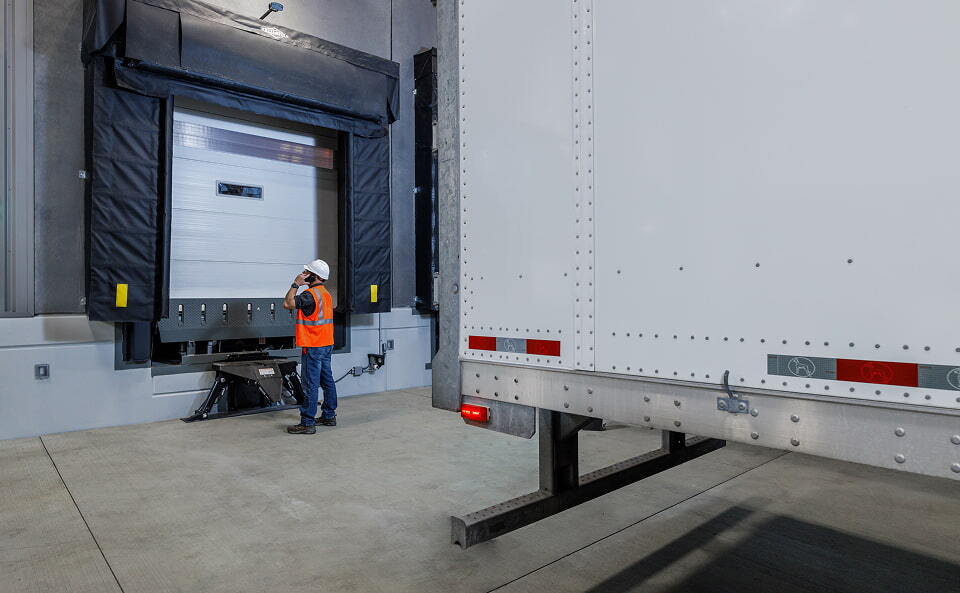Every facility has them: near-misses. A forklift skids but doesn’t hit anyone. A dock restraint is overridden but nothing bad happens. A worker slips on a spill but regains balance.
These moments are often dismissed as “lucky breaks,” but they are actually early warning signs of much larger risks.
Research from the National Safety Council shows that for every serious injury or fatality, there are 29 minor injuries and 300 near-misses (NSC). Ignoring near-misses means ignoring hundreds of opportunities to prevent the next accident.
At the loading dock, where heavy equipment, fast-moving vehicles, and high turnover collide, catching safety risks early is essential.

Why Near-Misses Matter More Than You Think
-
They reveal hidden hazards: Near-misses expose unsafe practices, poor training, or faulty equipment before they escalate.
-
They multiply under pressure: High turnover, tight schedules, and productivity demands increase risky behaviors like overrides.
-
They provide predictive insight: Tracking near-misses helps identify patterns, shifts, or docks that carry the most risk.
-
They cut costs: Workplace injuries cost U.S. employers over $167 billion annually in medical expenses, lost productivity, and insurance increases (NSC). Preventing even one incident saves thousands.
Common Near-Misses at the Loading Dock
-
Dock overrides: Vehicle restraints manually bypassed so drivers can pull out early.
-
Slips and trips: Spills, weather, or cluttered dock floors creating hazards.
-
Forklift close calls: Narrow aisles, poor visibility, or lack of pedestrian separation.
-
Unsecured trailers: Loading or unloading before trailers are properly restrained.
-
Door or leveler malfunctions: Equipment sticking or hesitating, leading to rushed workarounds.
From Reporting to Action
The problem isn’t just that near-misses happen, it’s that they often go unreported. Many employees worry about blame or don’t think an uninjured incident is worth mentioning. Without visibility, leadership can’t act.
Here’s how facilities can turn near-misses into proactive safety improvements:
-
Make reporting easy and blame-free: Use digital logs or mobile apps for fast, anonymous reporting.
-
Connect near-miss data to equipment logs: Identify whether risks are caused by behavior, maintenance, or both.
-
Look for trends, not one-offs: Spot repeat risks on specific shifts or docks.
-
Respond visibly: Show employees their reports lead to action, building trust and a culture of safety.
-
Integrate alerts and analytics: Real-time notifications and event pattern tracking catch risks in the moment and prevent escalation.
Real-World Example
One facility using live safety analytics discovered double-digit restraint overrides in just 30 days. By surfacing this pattern early, they investigated the root cause and corrected unsafe behavior before an incident occurred.
What could have been overlooked as “minor” turned into an opportunity to prevent major accidents.
Leadership Questions Checklist: Near-Miss Safety
Ask these questions to ensure your facility is catching risks early:
-
Do we know how many near-misses happened last month?
-
Can we identify the top 3 causes of near-misses in our facility?
-
Are our employees comfortable reporting unsafe behaviors?
-
Do we distinguish between mechanical and behavioral causes?
-
Are reports tracked digitally for quick analysis and OSHA readiness?
-
How quickly do we act on repeated near-miss trends?
The Bottom Line
Near-misses are not just lucky breaks, they are flashing red lights warning of bigger problems ahead.
Facilities that track, analyze, and act on near-miss data can reduce incidents, improve compliance, and foster a culture where safety is everyone’s responsibility.
The safest docks aren’t just those without accidents, they’re the ones where near-misses are caught early and turned into meaningful action.